The October Challenge through Amy Warden’s Great Cakes Soapworks is using alternative liquids for the water in the soap. In past soaps, I’ve used beer, coconut milk, chamomile tea and water; all those are incredible. So, to cut to the chase, this is my entry. Scented with an essential oils of Lavender, Rosemary, Patchouli, Orange, and Bourbon Geranium.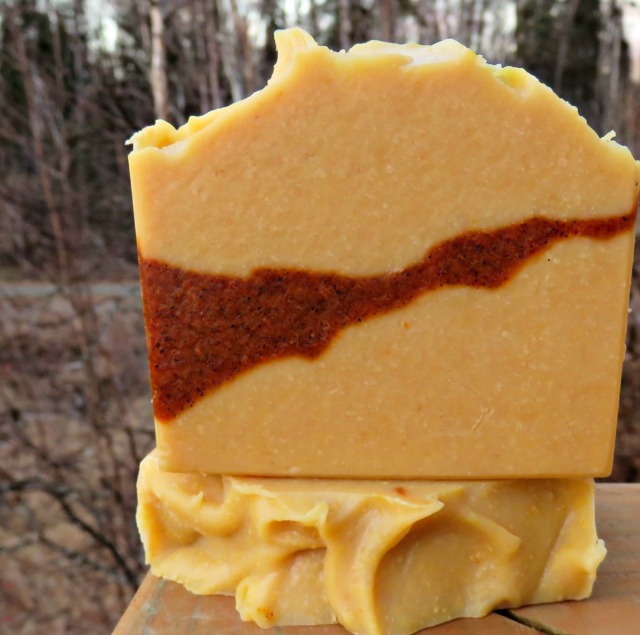
In case you don’t want to read all this, here are all three batches I made.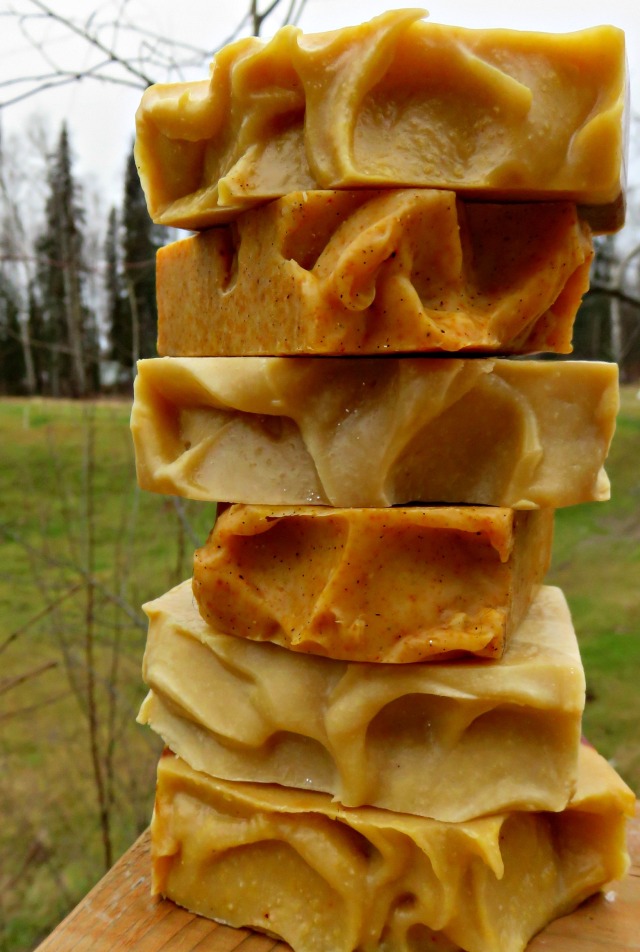
We have been working hard this year with our expanded garden and I have nurtured several wild plants. So, I decided to use a tea made with my homegrown calendudula and rosemary, wild plantain, wild chamomile and chickweed. After washing the wild plants, I brought my water to a boil and added my botanicals. They simmered for about 5 minutes, then covered the pot and let them steep for about 30 minutes. I cooled it and strained the liquid for my soap. Because I used natural botanicals in my liquid, it seemed like a no brainer to continue that theme. I added a bit of aloe to the liquid, bamboo silk, a bit of sugar (for lather) and then the lye, and let that cool.
I wanted a soap that would be natural, but incredibly luxurious. I used olive oil, castor oil, coconut oil, apricot kernel oil, and shea butter. This has very high moisturizing qualities and should be an awesome soap. The herbal infusion, aloe and silk will take it over the top. For scent I used a blend of essential oils that included lavinden, patchouli, grapefruit, ylang ylang and rosemary. I planned on three layers, with a light sprinkle of vanilla bean seeds between layers. The bottom layer would have annatto powder added to give a deeper orange color, the middle layer would be the natural light yellow from the oils and herbs, and the top layer would have carrot powder for a little different orange color. I would pour each layer with the mold tilted to give a bit of drama.
I poured the lye solution into my weighed and cooled oils, blended and started. It did seem to thicken more than I thought it should, but I’m pretty good managing thick soap batter. Finished my last layer and texturing the top, and began thinking why is this mold only 3/4 full. This should be full to a little over the top. What the heck… Back and checked the recipe. Hmmm… I didn’t pour any olive oil. Curses!!!! D#*!*#!@ it!!!!!
So, scooped my lovely soap out and added the missing oil and blended the heck out of it. This time I poured half the batter with the mold tilted and a dusting of vanilla seeds and the rest of the batter. Well, it is still going to be an awesome soap, just not the planned one. I still have enough herbal infusion to make another batch. Out to the shop I go!
Batch one. (I love annatto seed in soap!) 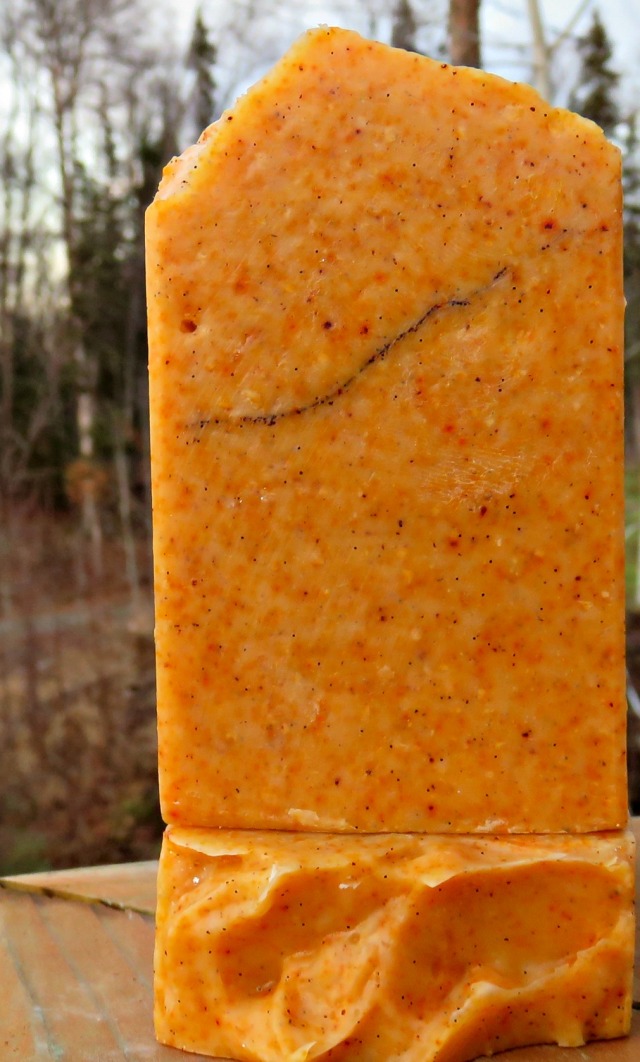
On to round two, I decided to use my fresh homegrown carrots in addition to my brewed herbal tea in this batch along with locally made birch syrup. To make a long story short, I lightened part of the batter with titanium dioxide for to give a layered look and glitter on top (I LOVE glitter) Amy graciously reminded me no t.d., and no glitter. Well, bummer. I was running out of time and not sure I wanted to put more time into this, but decided just one more.
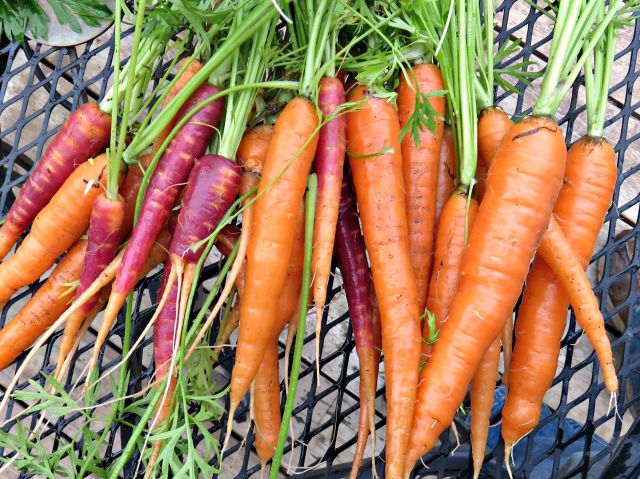 Some of my carrots, and below, Calendula. Below that, herbs
Some of my carrots, and below, Calendula. Below that, herbs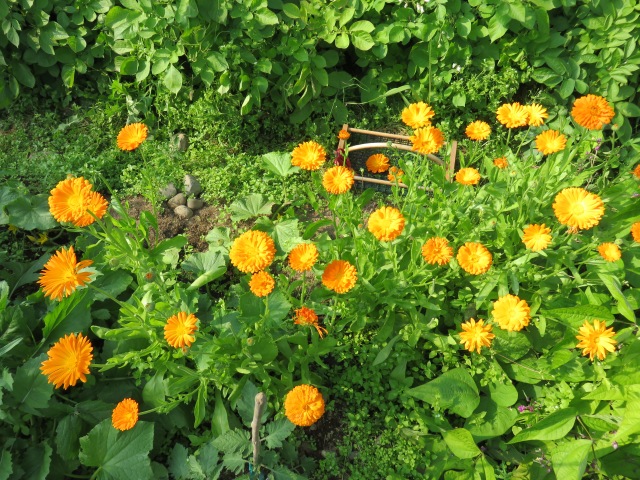
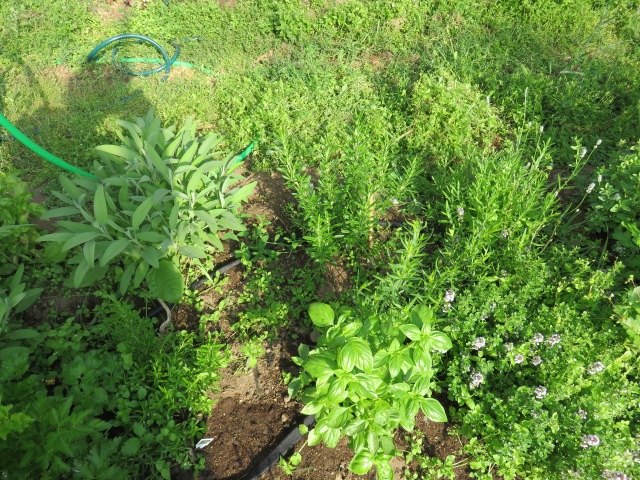 Batch two
Batch two
Round three. For the liquid, my brewed herbal tea with a bit of aloe powder and my fresh homegrown carrots will also be part of this batch. Cooked and pureed the carrots (If you need more info on the benefits of carrots besides vitamins and beta carotenes, please check WebMD; good plain English info) and (once again) added local birch syrup. Birch syrup is locally produced, has fructose which helps lather and is a sustainable product. I added annatto seed powder (Annatto also contains very high concentrations of carotenoids, chemicals in the same class as alpha- and beta-carotene. Mountain Rose Herbs website) to part of the batter to give a little interest, a little exfoliation and color. The oils used are olive oil, apricot kernel oil, castor oil, coconut oil, and shea butter. I also added raw tussah silk to the lye water.
My herbal tea was brewed with the following herbs, all from our pesticide free garden and yard. I believe these botanicals are soothing and beneficial. I does sound lovely on a label, and may have skin benefits. (Check out the Mayo Clinic, WebMd, Rosemary Gladstar; pick your source!)
- Plantain “Medicinally, plantain leaf is approved by the German Commission E for respiratory catarrhs and mild inflammation of the oral and pharyngeal mucosa. It is traditionally used for upper respiratory support, and is topically used for minor cuts, bruises, and stings. Plantain is very high in vitamins A and C and is also a rich source of calcium.” (Mountain Rose Herbs website) We have a local doctor who has prescribed plantain poultices for skin irritation.
- Calendula “Nicholas Culpepper, a 17th century botanist, herbalist and astrologist, mentioned using calendula juice mixed with vinegar as a rinse for the skin and scalp and that a tea of the flowers comforts the heart.7 Astrologically associated with the sun and the fire element, calendula was believed to imbue magical powers of protection and clairvoyance, and even to assist in legal matters. Flowers strung above doorposts were said to keep evil out and to protect one while sleeping if put under the bed. It was said that picking the flowers under the noonday sun will strengthen and comfort the heart.11
- Calendula was used in ancient times in India as well, and according to Ayurvedic healing principles is energetically cooling and has a bitter and pungent taste. It was employed as vulnerary, antispasmodic, alterative and used on minor wounds, as an eyewash, to soothe bee stings, and for digestive disturbances.12And, in traditional Chinese medicine (TCM), calendula (called Jin Zhan Ju) is considered energetically neutral and drying and is used to support healthy skin. Calendula is employed to move stagnant blood therefore increasing circulation to the skin.Traditionally, in Native American cultures, it has been employed to assuage ailments including occasional upset stomach. Traditional use mirrors many of our contemporary applications of this medicinal plant. Modern studies confirm its efficacy.4,15-18 According to herbalist Paul Bergner, calendula is an herb used for minor wounds that helps by bringing circulation to the area in distress. It can be used similarly to Arnica sp.,5,19 yet it is a much more mild plant that can be used on open wounds.” (Mountain Rose Herbs website)
- Rosemary “Medicinally, rosemary is approved by the German Commission E to support healthy digestion. It is also approved externally for healthy circulation and alleviation of joint pain. The oil is frequently used for aromatherapy, and has been shown to enhance alertness.” (Mountain Rose Herbs website)
- Rosemary is used topically (applied to the skin) for preventing and treating baldness; and treating circulation problems, toothache, a skin condition called eczema, and joint or muscle pain such as myalgia, sciatica, and intercostal neuralgia. It is also used for wound healing, in bath therapy (balneotherapy), and as an insect repellent.
- Chickweed Used to help reduce inflammation of irritated and itchy skin, for insect bites, boils The Boreal Herbal by Beverly Gray, page 65. Copyright 2011.
- Wild Chamomile To help alleviate inflammation of a wound or for achiy, sore muscles. The fragrance is known help you fall asleep. The Boreal Herbal by Beverly Gray, page 59. Copyright 2011.
This batch turned out beautifully. My camera died when making the soap, so I can’t show you just how richly dark orange the batter was. It lightened considerably during saponification. I might try again and not let it gell. This is a deliciously awesome soap and the one I envisioned. (This pic is of batch two with the offending glitter, but you can see how beautiful the color started out. I may rinse the glitter off this batch!)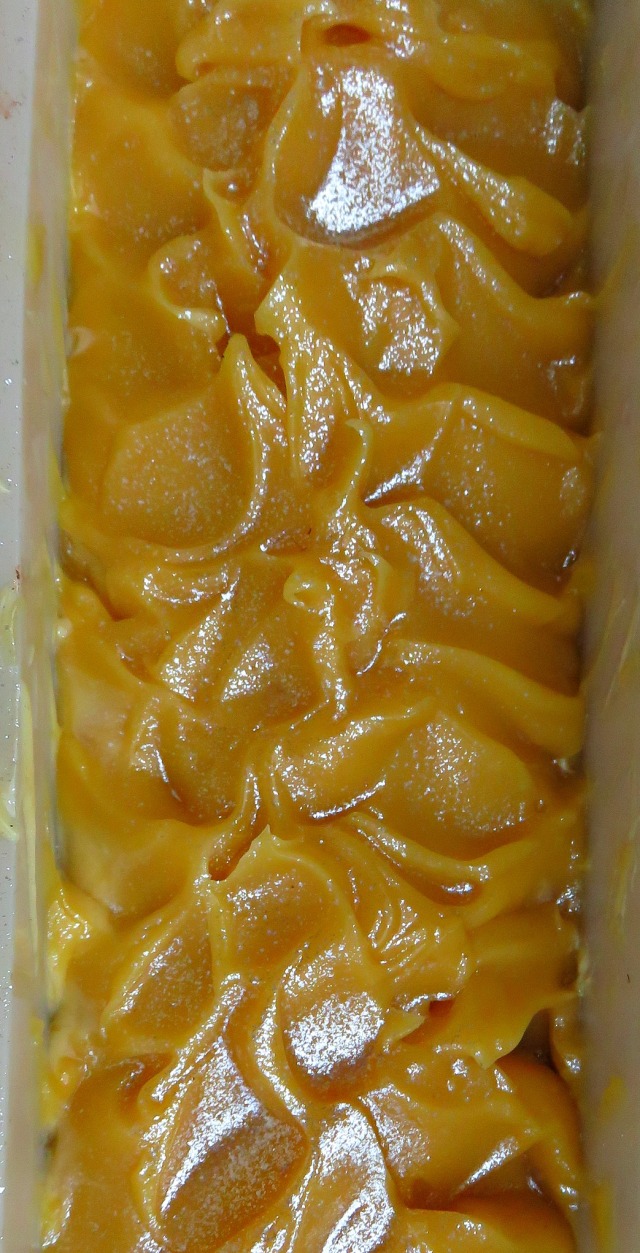

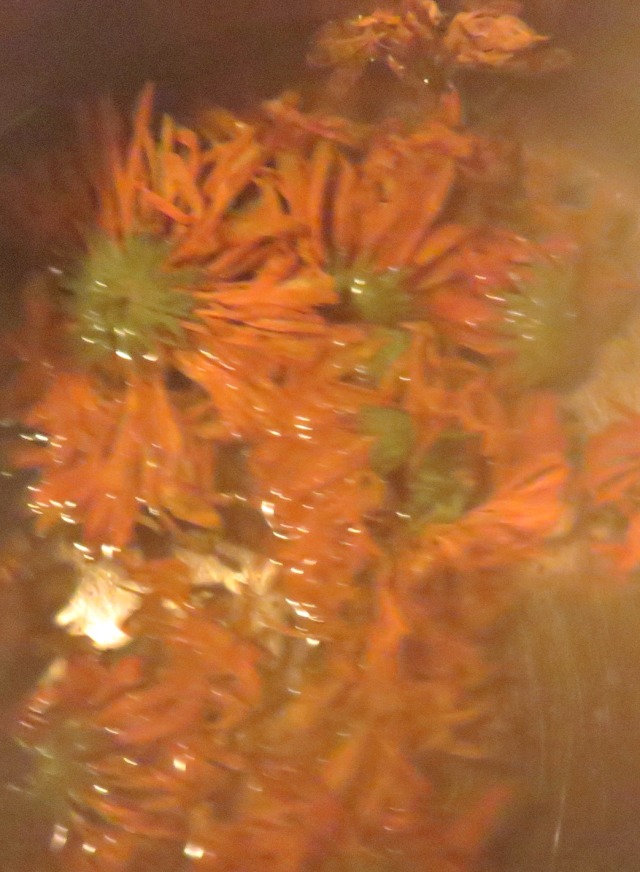
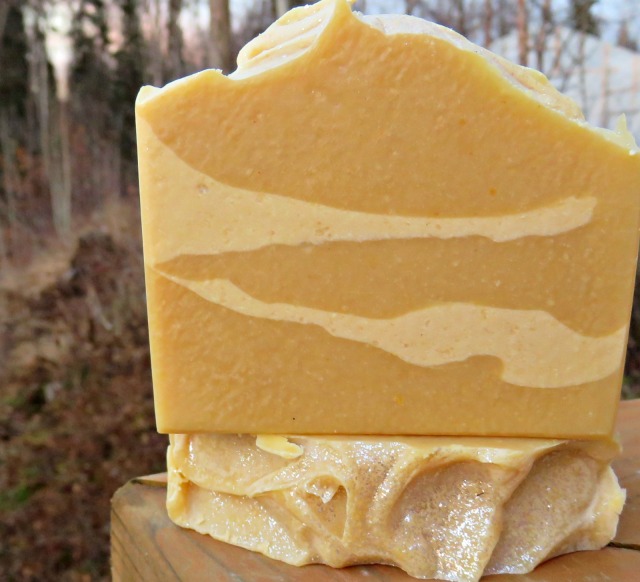
Beautiful soap!
Thanks Natalia! This (eventually ;*) turned out nicely!
Really striking soap. I love carrot soap – so am sure that with all of the herbs added, it’ll be amazing!
Thanks Debbie! It will be awesome! :*)
You are pretty amazing! They look wonderful!
Thanks Francine!
I love that you used so many wonderful ingredients from your garden to make your tea – and the carrots too! Way to be persistent – I can’t believe you were able to save the first batch – it really looks great! Now you have lots of fantastic soap with amazing benefits. 🙂
Thanks Amy. Very glad you reminded me of the guidelines for this challenge. This is making me reconsider my business soaps and ingredients. I’m on to something! :*)
I love the design and color combination you used. Fantastic job!
Thanks Debi. Definitely fits our life and where we live.
I love your fall color choices. You are so lucky to have a garden . Great job.
Thanks Organza Soaps! I didn’t pick the colors for fall, but the ingredients just dictated what to use. I agree, we are lucky to have our garden. It’s one of my favorite places. So peaceful.
Batch three is wonderful! But so is batch two in my opinion. Although I have to agree with you on the glitter. I’m not much of a glitter girl in any soap, but in this type of all-natural soap is really a no-no for me. Great looking soaps, all of them!
Thank you, Anna. Yes, the glitter for these really didn’t go, in retrospect. Luckily, it washes off pretty easily!
Absolutely stunning! My favorite was your 3rd batch, the contrast of color is phenomenal!
Thank you! I liked that one too. Update, though. The lather was quite yellow, so I rebatched it. I think I like the rebatch better. I looks more like the first bar now.